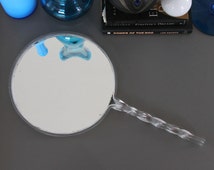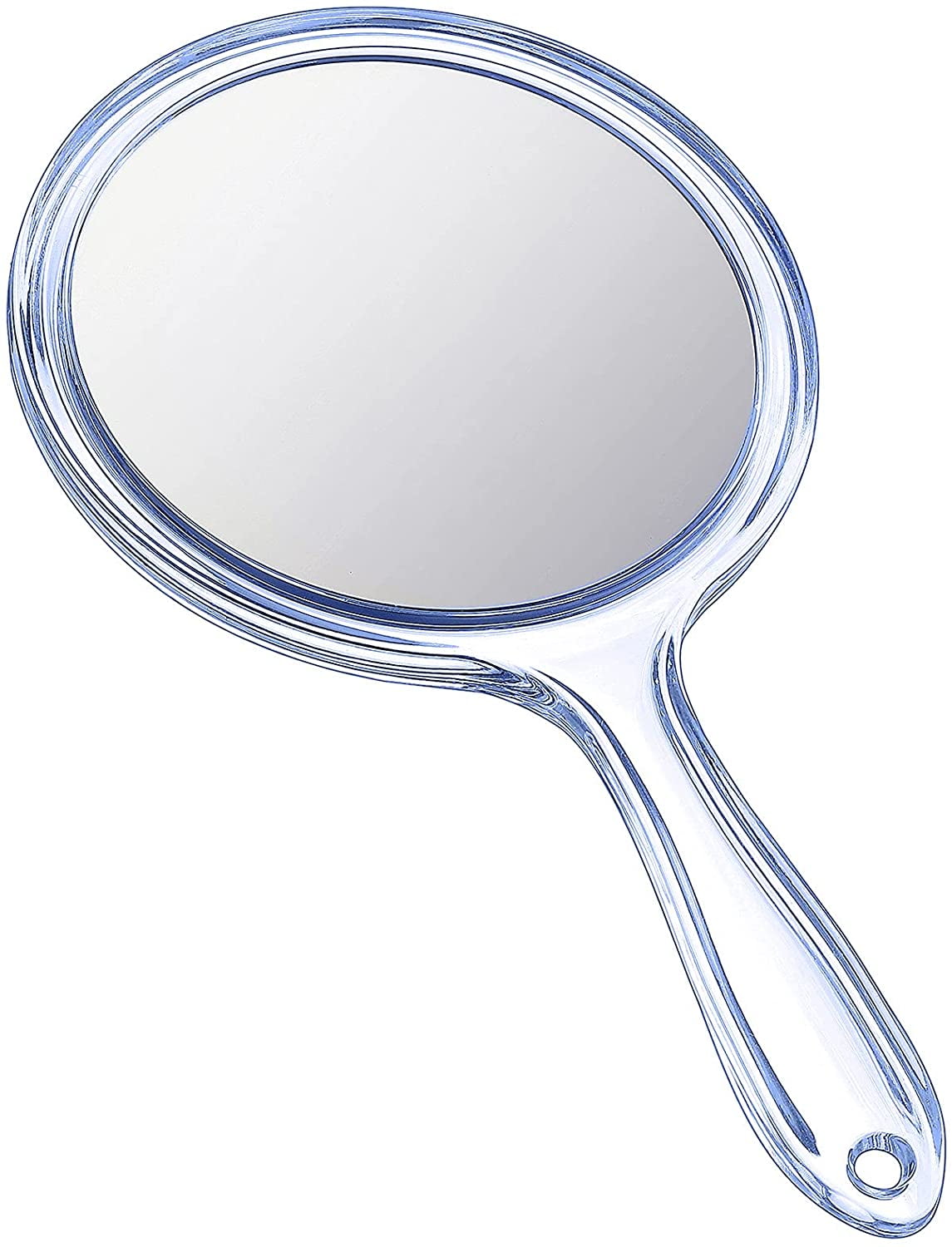

Therefore, if you discover what appears to be a first-surface mirror (i.e., an object you place up against it touches its reflection) in a dressing room, the chances are good it's a transparent mirror. As such, you're unlikely to ever encounter one being used as an ordinary mirror in a home or a dressing room for those applications much cheaper second-surface mirrors are nearly always used. First-surface looking glasses are quite expensive and are generally used only for specialized applications such as fine optical instruments or lasers, in which a protective layer of glass would interfere with the path of light or diminish precision. With a second-surface mirror, a gap between the object and its reflection will be visible because a layer of clear glass has been incorporated over the reflective part of the mirror to better protect it. With a first-surface mirror, any object you put up against it will touch its reflection because the reflective part of mirror is laid in right at the surface. The fingernail test described above is a method for determining the difference between first-surface mirrors and second-surface mirrors, both of which are ordinary mirrors glazed in a different fashion. These panels are confusingly referred to as both "one-way mirrors" and "two-ways mirrors," so to avoid additional confusion we will henceforth call them "transparent mirrors."
DOUBLE SIDED HAND MIRROR WINDOWS
The subject this message addresses are panels which look like mirrors on one side but work like tinted windows from the other side - that is, if you're on one side of such a panel, it appears to be mirror in which you can see your reflection if you're on the other side, it serves as a window through which you can see everything (and everyone) on the other side.

It is simple to do, and it might save you from getting "visually raped"!įirst off, we should clear up some confusing terminology. So remember, every time you see a mirror, do the "fingernail test". However, if your fingernail DIRECTLY TOUCHES the image of your nail, then BEWARE, for it is a 2-way mirror! You can further ascertain the nature of the suspect surface by hurling an object (e.g. Place the tip of your fingernail against the reflective surface and if there is a GAP between your fingernail and the image of the nail, then it is a GENUINE mirror. So, how do we determine with any amount of certainty? Well, once again, I am here to enlighten you. It is very difficult to positively identify the surface by just looking at it. they can see you, but you can't see them)? There have been many cases of people installing 2-way mirrors in female changing rooms. How many of you know for sure that the seemingly ordinary mirror hanging on the wall is a real mirror, or actually a 2-way mirror (i.e. When we visit toilets, bathrooms, hotel rooms, changing rooms, etc. Many would-be peeping toms still resort to less technologically-advanced methods such as peepholes and two-way mirrors, though, hence a warning which began circulating on the Internet in April 1999: With the recent advancements in miniaturized electronics, it's hard for any of us to know we're not being spied upon these days cameras and transmitters can now be made so small and unobtrusive that most of us wouldn't be able to find them even if we knew where to look for them.


 0 kommentar(er)
0 kommentar(er)
